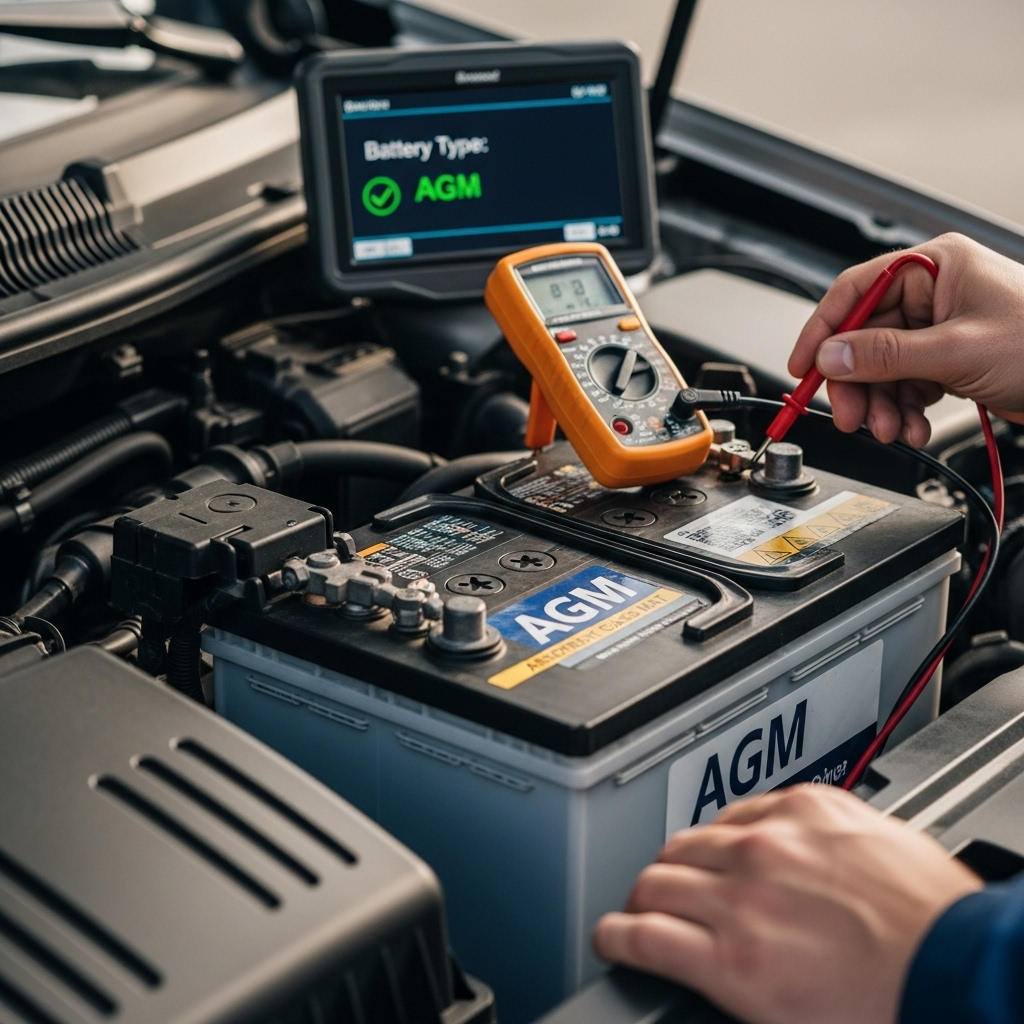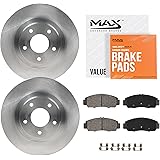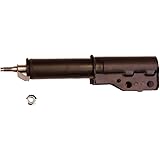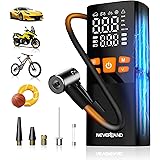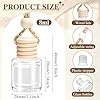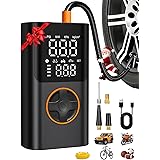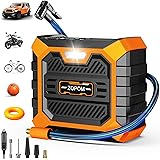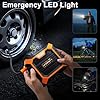Table of Contents
Have you ever found yourself staring at your vehicle’s battery, wondering exactly what type it is? With so many battery technologies on the market today, correctly identifying your battery type isn’t just a matter of curiosity—it’s essential for proper maintenance, charging, and maximizing lifespan. If you’ve been asking yourself “how do I know if my battery is AGM?” you’ve come to the right place. AGM (Absorbent Glass Mat) batteries have become increasingly popular due to their maintenance-free operation and superior performance, but they require specific care that can damage them if applied incorrectly to other battery types.
This comprehensive guide will walk you through every possible method to definitively identify an AGM battery. We’ll explore simple visual inspections, label decoding, technical characteristics, and what to do when all else fails. By the end of this article, you’ll be equipped with the knowledge to confidently determine your battery type and understand why this distinction matters for your vehicle’s electrical system and your battery’s longevity.
What Exactly is an AGM Battery?
Before we dive into identification methods, it’s helpful to understand what makes AGM batteries different. AGM stands for Absorbent Glass Mat, which refers to the sophisticated internal construction that sets these batteries apart from traditional options.
Unlike flooded lead-acid batteries that contain liquid electrolyte free to move within the cell compartment, AGM batteries feature a fiberglass mat separator that absorbs and contains the electrolyte solution . This absorbed electrolyte system creates what is known as a Valve-Regulated Lead-Acid (VRLA) battery, which is permanently sealed and requires no water additions throughout its service life .
The AGM design offers several significant advantages that explain their growing popularity:
- Maintenance-free operation: No need to check or refill water levels
- Spill-proof design: Can be installed in various orientations without risk of leakage
- Vibration resistance: Withstand harsh conditions better than flooded batteries
- Faster charging: Accept charge more quickly than traditional batteries
- Lower self-discharge: Retain charge longer when not in use
These characteristics make AGM batteries ideal for modern vehicles with start-stop systems, applications with high electrical demands, and situations where battery access is difficult .
Why Correctly Identifying Your AGM Battery Matters
Knowing whether your battery is AGM isn’t just technical trivia—it has real-world implications for battery health, performance, and safety. Using incorrect charging parameters or maintenance practices can permanently damage your battery and potentially create hazardous situations.
Charging Requirements: AGM batteries require specific voltage settings during charging. Using a charger or charging profile designed for flooded batteries can overcharge an AGM battery, causing excessive gassing, accelerated aging, and potentially dangerous pressure buildup . The optimal absorption voltage for AGM batteries typically ranges from 14.4 to 15.0 volts, while float voltage should be maintained between 13.2 to 13.6 volts .
Maintenance Practices: Attempting to perform maintenance appropriate for flooded batteries on an AGM battery can cause damage. AGM batteries are permanently sealed, and trying to open them to add water will break their sealed construction and likely ruin the battery .
Performance Expectations: Understanding your battery type helps set realistic performance expectations. AGM batteries typically offer longer service life (often 4-7 years), better performance in temperature extremes, and superior resilience to vibration compared to flooded batteries .
Replacement Considerations: When replacing your battery, knowing the correct type ensures you purchase the right replacement and can assess whether upgrading or changing battery technologies is appropriate for your application.
Visual Identification Methods: The Quickest Way to Know If Your Battery is AGM
The fastest way to determine your battery type is through simple visual inspection. These methods require no tools or technical expertise and can often provide a definitive answer in minutes.
Check the Battery Label for Explicit Markings
The most straightforward method is to examine the battery case for clear identification. Manufacturers typically print the battery type prominently on the label to prevent confusion.
Look for these key terms on the battery case:
- “AGM” or “Absorbent Glass Mat” – Direct identification of the technology
- “VRLA” or “Valve Regulated Lead Acid” – Technical term that includes AGM batteries
- “Maintenance-Free” or “Sealed” – Characteristics of AGM design
- “Dry Cell” – Sometimes used to describe AGM batteries
- “Spill-Proof” or “Non-Spillable” – Key safety feature of AGM construction
Additionally, look for any specific technology names the manufacturer might use, such as “AGM Technology” or “Advanced AGM.”
Examine the Physical Case Design
If label markings are unclear or worn away, the physical design of the battery can provide strong clues about its type.
Top Cover Design: AGM batteries typically have a completely flat top cover with no removable caps or openings . This sealed design is necessary because AGM batteries are designed to recombine gases internally rather than venting them like flooded batteries . If your battery has individual removable caps for adding water, it is definitely not an AGM battery.
Ventilation System: While AGM batteries are sealed, they do include a safety pressure relief valve to vent excess pressure in fault conditions . This is typically a small, discreet venting system, often located on the side or a subtle part of the top cover, unlike the prominent vent caps of flooded batteries.
Case Construction: AGM batteries often have more robust, sometimes slightly thicker case construction to withstand internal pressures .
Compare Weight and Physical Characteristics
Though less definitive than label checking, physical characteristics can provide additional clues:
- Weight Comparison: AGM batteries are generally heavier than similarly-sized flooded batteries due to their denser internal construction and thicker plates . If you have experience with both types, you might notice this weight difference.
- Case Materials: Some AGM batteries use different case materials or colors, though this varies significantly by manufacturer.
Visual Identification Checklist for AGM Batteries
| Identification Method | What to Look For | AGM Battery Indicator |
|---|---|---|
| Label Markings | “AGM,” “Absorbent Glass Mat,” “VRLA,” “Maintenance-Free” | Clear mention of AGM technology or VRLA designation |
| Top Cover | Flat, seamless top with no removable caps | No filler caps present; completely sealed top |
| Venting System | Small pressure relief valve, often on side | No traditional vent caps; minimal venting system |
| Case Markings | “Sealed,” “Spill-Proof,” “Non-Spillable” | Explicit safety warnings about sealing |
| Weight | Heavier than similar-sized flooded battery | Noticeably weighty for its size |
Technical Identification Methods for AGM Batteries
When visual identification proves inconclusive, more technical approaches can help determine your battery type. These methods require some basic equipment or technical resources.
Consult Your Vehicle Owner’s Manual
Your vehicle’s owner manual often specifies the exact battery type recommended or originally equipped by the manufacturer. Look for sections titled “Battery Specifications,” “Battery Maintenance,” or “Replacement Parts” . This information is particularly reliable for newer vehicles with sophisticated electrical systems that require specific battery technologies for optimal performance.
Research the Battery Model Number
Every battery has a unique model number, typically printed on the label. This model number can be researched online through the manufacturer’s website or retailer databases to determine the exact specifications, including whether it’s an AGM type . This is one of the most reliable methods when the label isn’t clear about the technology type.
Professional Testing and Consultation
If you’re still uncertain after trying other methods, consult with a professional:
- Auto parts stores typically offer free battery testing and their technicians can usually identify battery types.
- Mechanics or battery specialists have experience identifying battery technologies and may have additional testing methods .
- Battery manufacturers can often identify the technology type if you provide them with the model number.
Electrical Performance Characteristics
While not a definitive identification method on its own, understanding electrical performance can provide additional clues:
- Voltage Readings: AGM batteries have slightly different voltage characteristics than flooded batteries. A fully charged and rested AGM battery should read approximately 12.8-13.0 volts, compared to 12.6 volts for a flooded battery .
- Charging Response: AGM batteries typically accept charge more quickly than flooded batteries if you have the capability to observe this .
AGM Battery Voltage Characteristics

Understanding the voltage characteristics of AGM batteries can provide additional identification clues and help you assess the health of your battery.
State of Charge Voltage Chart for 12V AGM Batteries
| Voltage Reading (12V Battery) | State of Charge | Condition |
|---|---|---|
| 13.0V | 100% | Charging |
| 12.85V | 100% | Rested (2+ hours) |
| 12.60V | 75% | Rested |
| 12.30V | 50% | Rested |
| 12.00V | 25% | Rested |
| 10.50V | 0% | Rested |
These voltage characteristics differ slightly from flooded batteries, which typically read about 12.6V when fully charged and rested . If you notice your battery maintaining higher voltages than expected, it might be an AGM type.
Comparing AGM Batteries to Other Battery Technologies
Understanding how AGM batteries differ from other common technologies can help with identification and explain why the distinctions matter.
AGM vs. Flooded Lead-Acid Batteries
Flooded batteries are the traditional automotive batteries with liquid electrolyte free to move within the cells . Key differences include:
- Maintenance: Flooded batteries require regular water addition; AGM batteries are maintenance-free
- Orientation: Flooded batteries must remain upright; AGM batteries can operate in various positions
- Venting: Flooded batteries have vent caps for gas escape; AGM batteries have minimal venting systems
- Construction: Flooded batteries typically have removable caps; AGM batteries are completely sealed
AGM vs. Gel Batteries
Gel batteries are another VRLA type that use a silica additive to stiffen the electrolyte into a gel . Both are sealed and maintenance-free, but differ in:
- Electrolyte: AGM uses absorbed liquid; Gel uses solidified electrolyte
- Performance: AGM handles high currents better; Gel is more sensitive to high-amperage situations
- Charging: Gel batteries require lower charging voltages (typically 14.0-14.2V) compared to AGM
AGM vs. Lithium-Ion Batteries
Lithium-ion batteries represent a different technology category with distinct characteristics :
- Chemistry: AGM uses lead-acid chemistry; Lithium-ion uses lithium compounds
- Weight: Lithium-ion batteries are significantly lighter
- Cost: AGM batteries are generally less expensive
- Applications: AGM is common in automotive and backup power; Lithium-ion dominates portable electronics and EVs
Common Misconceptions About AGM Battery Identification
Several misconceptions can lead to incorrect identification of AGM batteries:
“All Maintenance-Free Batteries are AGM” – While AGM batteries are maintenance-free, not all maintenance-free batteries are AGM. Some flooded batteries are labeled “maintenance-free” but have different internal construction .
“All Sealed Batteries are AGM” – Both AGM and Gel batteries are sealed VRLA types, so a sealed battery could be either technology .
“AGM Batteries are Always Labeled Clearly” – Sometimes battery labeling can be minimal or worn away, requiring other identification methods.
What to Do When You’ve Confirmed Your Battery is AGM
Once you’ve definitively identified your battery as AGM, follow these best practices to maximize its performance and lifespan:
Use an AGM-Compatible Charger: Ensure your battery charger has a specific AGM setting or is confirmed to be compatible with AGM batteries . Using incorrect charging parameters can significantly reduce battery life.
Follow Proper Charging Procedures: AGM batteries require specific voltage settings—typically absorption voltage between 14.4-15.0V and float voltage between 13.2-13.6V .
Avoid Deep Discharges: While AGM batteries handle deep cycling better than flooded batteries, repeatedly discharging below 50% capacity will shorten their lifespan .
Perform Regular Inspections: Check terminals for corrosion, ensure connections are tight, and keep the case clean even though AGM batteries require no electrolyte maintenance.
Store Properly: If storing your vehicle or battery, maintain a full charge and consider using a maintenance charger designed for AGM batteries.
Troubleshooting AGM Battery Identification Challenges
Sometimes identification remains challenging despite your best efforts. Here are solutions for common scenarios:
Worn or Missing Labels: If the battery label is deteriorated, try researching any partial model numbers you can read, or consult a professional for identification.
Aftermarket Replacement Uncertainty: If you’re unsure what type was installed as a replacement, contact the previous owner or shop that performed the replacement, or have the battery professionally tested.
Unmarked Generic Batteries: Some economy batteries have minimal markings. In these cases, the physical characteristics (sealed construction, weight) are your best indicators.
Frequently Asked Questions About AGM Battery Identification
Can I replace a flooded battery with an AGM battery?
Yes, in most cases AGM batteries can directly replace flooded batteries, but you should ensure your vehicle’s charging system is compatible with AGM technology . Some older vehicles may require charging system adjustments.
Are AGM batteries always more expensive than flooded batteries?
Typically yes, AGM batteries command a higher initial price, but their longer lifespan and superior performance often make them more cost-effective over time .
Do AGM batteries require special maintenance?
AGM batteries are maintenance-free in terms of not requiring water additions, but they still benefit from regular terminal cleaning, proper charging practices, and protection from extreme temperatures .
Can I add water to an AGM battery if it’s not holding charge?
No, AGM batteries are permanently sealed and cannot be refilled. Attempting to open an AGM battery will likely destroy it and could create safety hazards .
How long do AGM batteries typically last?
With proper care and charging, AGM batteries typically last 4-7 years, though this varies based on application, climate, and maintenance practices .
Conclusion: Confidence in Battery Identification
Knowing how to identify an AGM battery is an essential skill for any vehicle owner or maintenance professional. By following the systematic approach outlined in this guide—starting with visual label inspection, moving to physical characteristic examination, and utilizing technical resources when needed—you can confidently determine your battery type and apply the appropriate care and maintenance practices.
Correct identification ensures you use proper charging parameters, avoid damaging maintenance mistakes, and maximize the performance and lifespan of your battery investment. The next time you find yourself wondering “how do I know if my battery is AGM?” you’ll be equipped with multiple verification methods to find the definitive answer.
Remember that when in doubt, consulting with a professional or using the battery model number for research are reliable approaches to confirm your battery type. Proper identification is the first step toward optimal battery performance and longevity.

